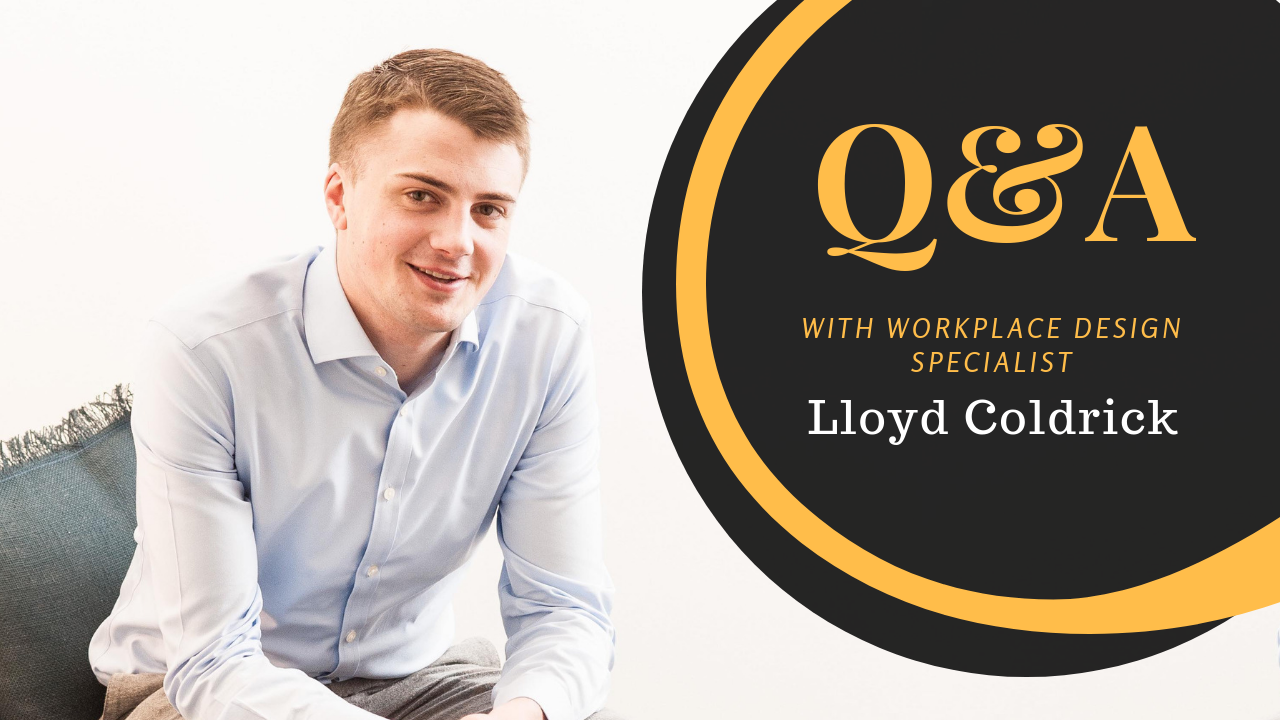- Workplace design specialist Lloyd Coldrick discusses the challenge of human-centric design and its place in the modern work environment.
- Coldrick lays out his top predictions for workplace design in 2019, which includes adaptable office environments and “defurbishments”.
- Great design isn’t just about aesthetics. It’s about mixing aesthetics into a human centric design to create a unified whole with minimal artistic and ergonomic sacrifices.
Lloyd Coldrick, Managing Director of Cobus, believes that coworking spaces have inspired a new era of workplace design by seeking to create a “destination workplace”.
For Coldrick, who is highly experienced in creating inspiring spaces for the workplace, human-centric design plays a key role in achieving the destination workplace, as it requires that designers consider and understand the end-users’ needs, aesthetic appeal, and user-friendliness.
Allwork.Space spoke with Coldrick about 2019 workplace design trends, the challenge of human-centric design, and why design should be mentally and physically pleasing.
Allwork.Space: There are so many workplace trends and predictions out there. Which ones do you think will be popping up the most across workplaces this 2019?
Lloyd Coldrick: At the top of my head, an adaptable office environment; by this I mean a dynamic and agile space that is highly interactive and not hampered by any physical or ergonomic constraints.
Private workstations will continue to make a come-back into the office. While most businesses dislike the traditional dividers and booths of yesteryear, semi-enclosed settings are still proving popular as they let employees work with as little distraction as possible without being completely closed off from the rest of the office.
On the note of privacy, we will see an increase in privacy storage. The recent enforcement of General Data Protection Regulation (GDPR) has altered the way in which employers store and secure sensitive data. Safely securing data in appropriate storage is crucial for all businesses in 2019.
The growing Millennial workforce generation has also contributed to the reimagining of the workplace. One way Millennials have done this is by asking for relaxation and recreational breakout areas. To attract a younger demographic of staff and clients, companies are also adopting ‘defurb’. Defurbishment is the process whereby buildings have been altered to expose the bare bones of their structure, including beams and brick or stone walls, which creates a more natural, eco-friendlier feel.
Suggested Reading: “Is this Workplace Wellness Amenity a Step too Far?”
We will also see an increase in spaces that promote mental and physical wellbeing. Modern office designs are adapting to reflect the importance of employees’ health and happiness, and research shows that people with higher levels of well-being are more resistant to ill health, both physically and mentally. Related to this, I believe ‘Living Walls’ will be appearing in many workspaces, especially in shared areas. They are a clever way of bringing the outdoors into the office environment and they can help create a sense of privacy.
Speaking about wellness, there’s a huge movement towards human-centric design and its potential to improve our experiences of the built environment.
Yes. Human centric design gives designers a deeper understanding of creating living spaces that are more humanistic, holistic, and solve problems for people.
In a way, the challenge of the human centric design is even greater than a purely aesthetic approach, because designers must consider the user’s needs, aesthetic appeal and user friendliness into their vision.
Mixing aesthetics into a human-centric design to create a unified whole with minimal artistic and ergonomic sacrifices is the ultimate challenge. The human centric design sends a message that the employees are of the utmost importance. Businesses have realised that a one-size-fits-all approach can’t be used. To design better, the human aspect of each individual company must be considered – it’s why a human centric approach is so important.
One concern, however, is that the focus upon individual people (or groups) might improve things for them at the cost of making it worse for others. The more something is tailored for the particular likes, dislikes, skills, and needs of a specific target audience, the less likely it will be appropriate for others. The individual is a moving target i.e. design for the individual of today, and the design will be wrong tomorrow.
So what you’re saying is that workplace design, specifically human-centric design, should be an ongoing process?
In a way, yes. The goal is to create a destination workplace, much like what coworking spaces have been trying to achieve for the past few years. To create a space where people want to work from requires a constant understanding of what users need and a constant understanding of the trends that are influencing and affecting the way we work.
You mentioned that human-centric design must be beyond aesthetically pleasing and it should take into consideration the users’ needs. What type of needs could this be?
The workplace should be aesthetically pleasing, as well as mentally and physically pleasing. The workplace environment affects our behaviours and emotions. For example, some people can feel claustrophobic or experience high stress levels when in a small space and, on the flip side, feel a sense of freedom when in an open-plan interior.
This again is one of the challenges of human-centric design. What works for some won’t work for others, which is why it’s important to offer choice within the workplace. The most important point here to remember, is that aesthetics doesn’t always equal happy or comfortable employees.
Designers should think about good lighting (making the most out of the natural light), acoustics, and air quality. These factors contribute to a mentally and physically pleasing built environment.


 Dr. Gleb Tsipursky – The Office Whisperer
Dr. Gleb Tsipursky – The Office Whisperer Nirit Cohen – WorkFutures
Nirit Cohen – WorkFutures Angela Howard – Culture Expert
Angela Howard – Culture Expert Drew Jones – Design & Innovation
Drew Jones – Design & Innovation Jonathan Price – CRE & Flex Expert
Jonathan Price – CRE & Flex Expert













